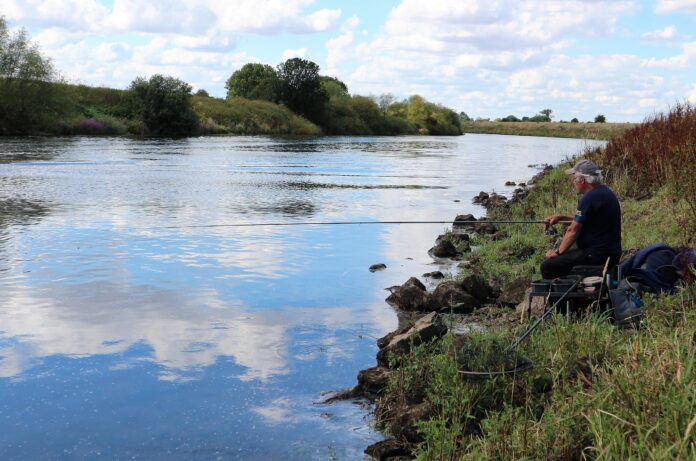POWERHOUSE SWIMS
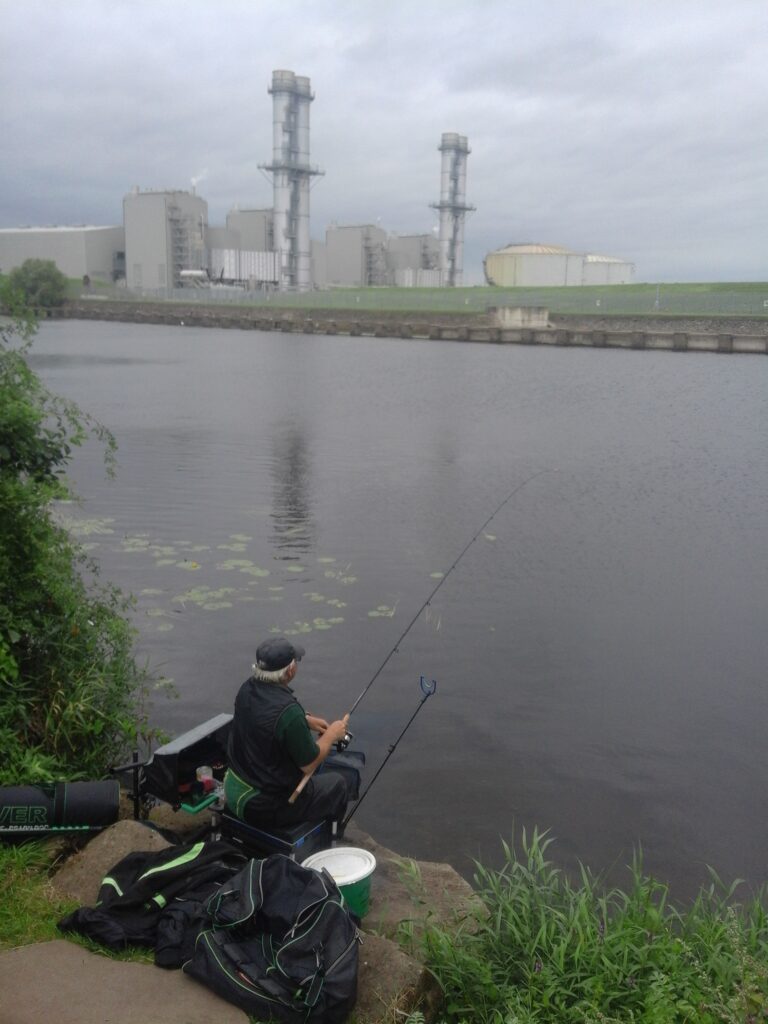

Staythorpe power station at Farndon is a significant landmark on the River Trent in the Newark area, only a short drive from where I live. Since I moved to the Midlands three years ago, the mighty river in this region has gained a grip on me like a magnet, and I have to keep going back. The wides in front of the power station are renowned for bream shoals that inhabit the far side, but these fish only tend to feed well when there’s extra water. Luckily, on my first visit the water had a tinge of colour, so my mate Andy and I fished groundbait feeder tackle across towards the far bank. It had been many years since I fished the Trent, going way back to my Essex County team fishing days. I’ve got a runner’s up National team medal somewhere that we won on this river, back in the days when John Dean was king. It felt great to be back and it wasn’t long before we were both getting plenty of bites, mainly from small fish to begin with, but that would change.
DROPPING BACK
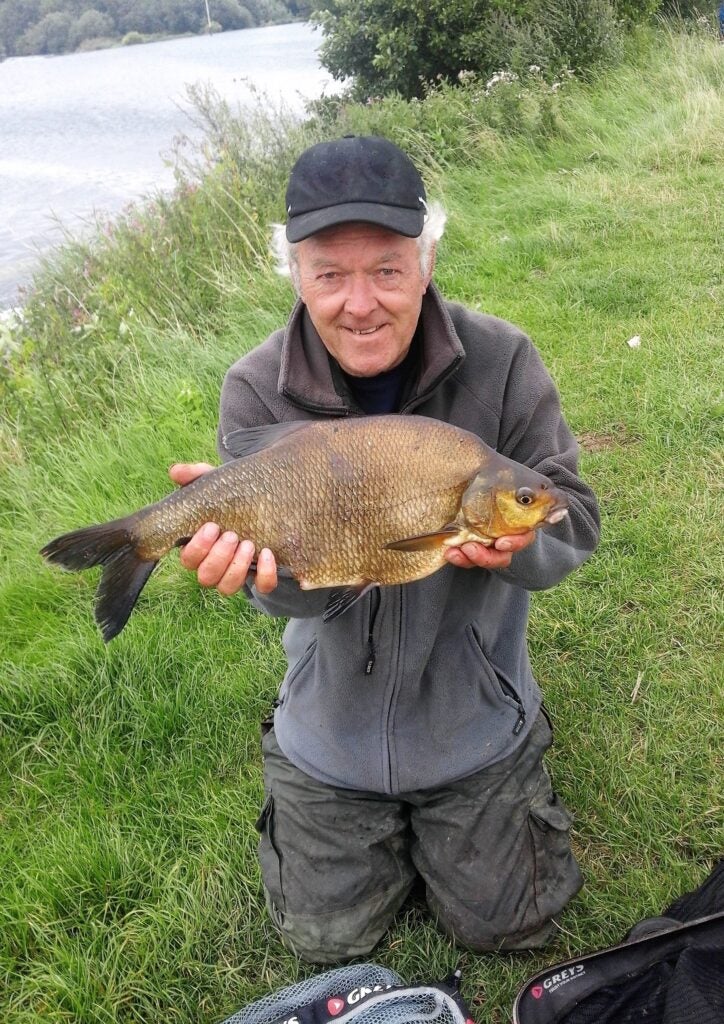

After our feeders had found a way through the tiny bleak, dace and perch, it wasn’t long before Andy landed a decent fish, which turned out to be a surprise two-pound-plus stripey. Not long after, I experienced a classic drop-back indication on my quivertip, resulting in being attached to a ponderous heavy weight. It turned out to be a slab-sided bream, followed shortly after by a similar-sized one. After that it was a battle to try and beat the ravenous bits. We were using baits like casters and chopped worm. River fishing has changed a lot since I used to make the long drive from London to visit venues like this. Back then it was all about maggots, widely fished with float gear or blockend feeders. Nowadays you can’t ignore pellets, boilies and fishmeal-based groundbaits, which are often fed by anglers targeting the massive barbel many stretches of the famous river now hold. I needed to consider trying out some different tactics.
MUSKHAM MEMORIES
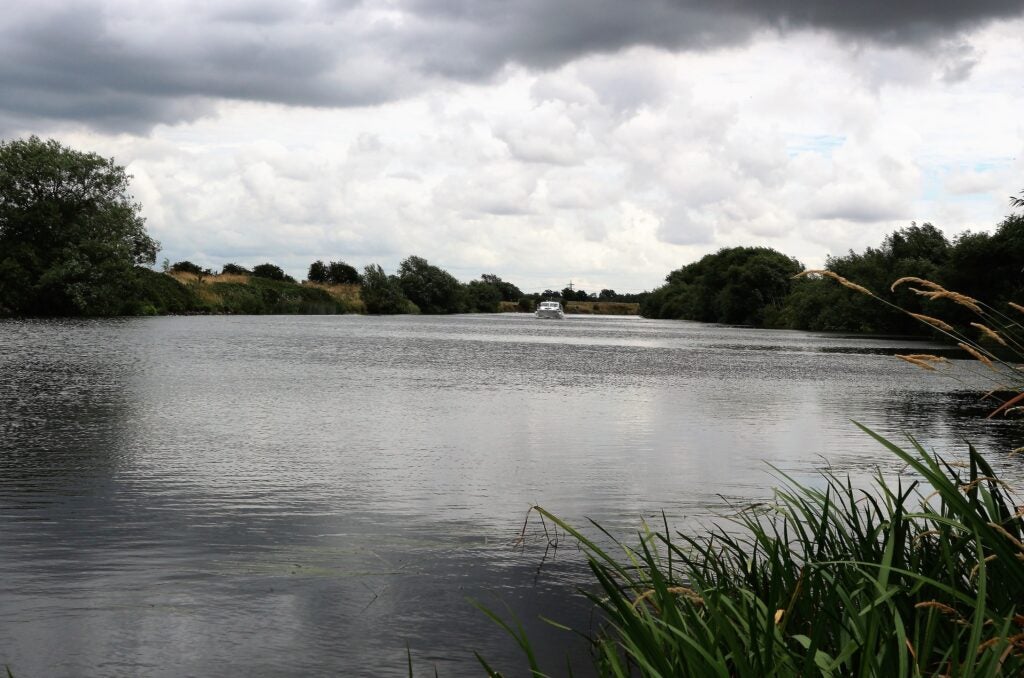

My next visit to the Trent was at Muskham, where Newark Needle Float inventor Walter Bower used to have his fishery close by. I remember seeing Walter demonstrating his novel stick float concept at an angling show many years ago. He had a big container of water and after tapping the top of a Needle Float, it dived down like a rocket. It was a brilliant selling point and many of us onlookers bought into it, although trying to use the float afterwards was a nightmare! Anyway, exploring the river near Walter’s old stomping ground was a pleasant experience. The surrounding lakes were full of bivvied-up carp anglers. It was also different when I got to the river. These days it’s mainly barbel anglers with rods set up on pods pointing skywards. But at least this time I was a bit more prepared, having plenty of pellets with me. I fed them in groundbait and caught a surprise net of quality roach, using a meaty flavour designed primarily for barbel and chub!
NEWARK DYKE
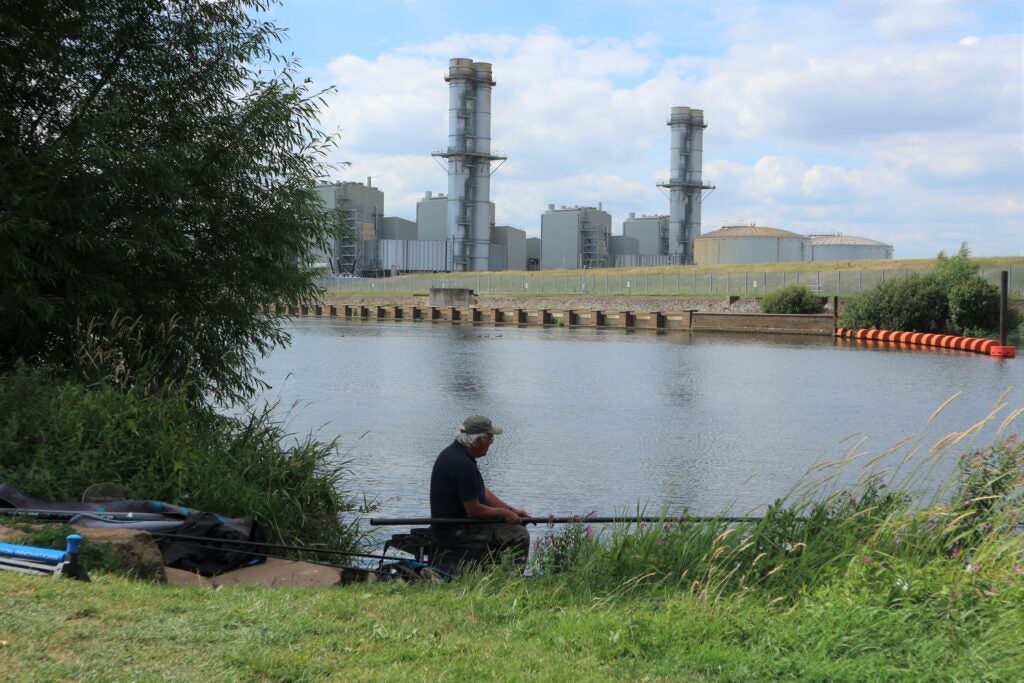

On a return trip to Farndon, I settled in a swim a bit further downstream from the power station, where the river narrows opposite a big weir. Normally the current pulls through hard here, but after little rain for weeks there was hardly any flow. I could easily control a 1g pole float. The only reason I’ve gone that heavy was to try and get through the teaming shoals of bleak, tiny roach and small dace. This Newark and District Piscatorial Federation venue can be fished on a day ticket for just a fiver, which is top value. There are lots of interesting swims to explore, along a stretch downstream of the weir local anglers call Newark Dyke. I decided to feed chop worm and casters in groundbait to begin with, planning to see if I could get hemp and tares working later in the session. Now I was getting to know the river a bit better, local anglers I had met were saying some of the older methods, like the deadly seed combination, can still produce.
POLE ACTION
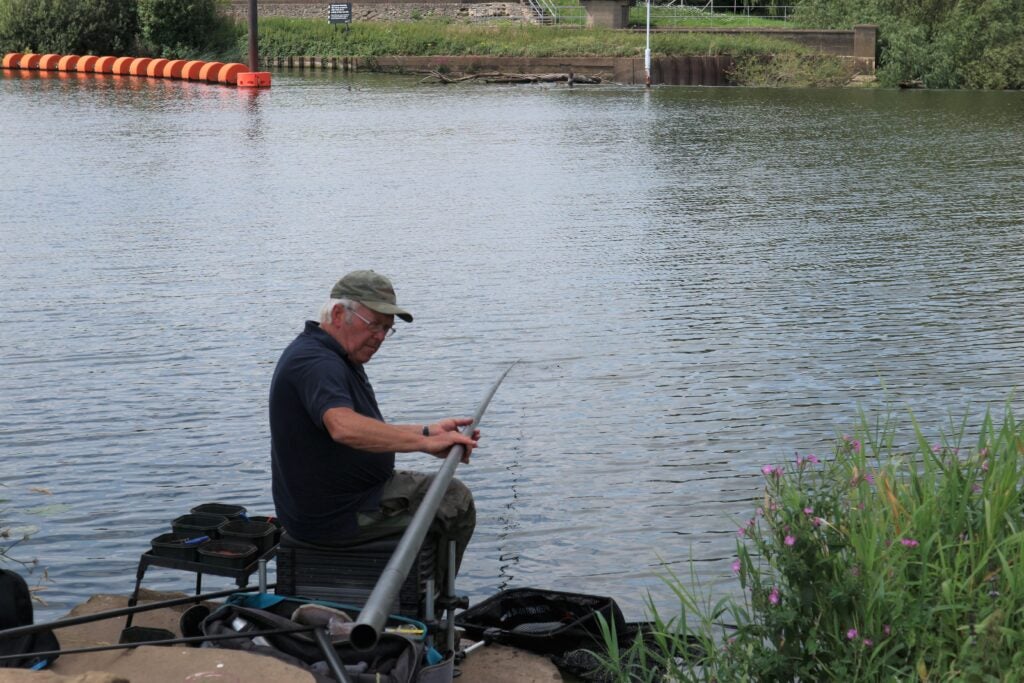

I find groundbait works well on sluggish rivers and gets things moving faster. I fed several medium balls of a dark mix, laced with chopped worm and casters, at a comfortable 10 metres. This distance allows me to feed fairly accurately by hand, rather than wasting lots of time cupping in. I planned to be putting in smaller balls of groundbait at least every second trot through, also loose feeding hemp and casters over the top with a light action catapult. I could always lay off the groundbait once the fish arrived, should loose bait look like being a better bet. Or I had the option of stepping up the balls of feed to every cast, if I needed to be more attacking and force my way through small fish. Although my pole float was only moving slowly downstream, it produced almost a bite every put in from the off. Perch were soon homing in on the chopped worm and caster, however I had to dump my rig in to try and get through tiny fish, which were everywhere.
WORKING IT OUT
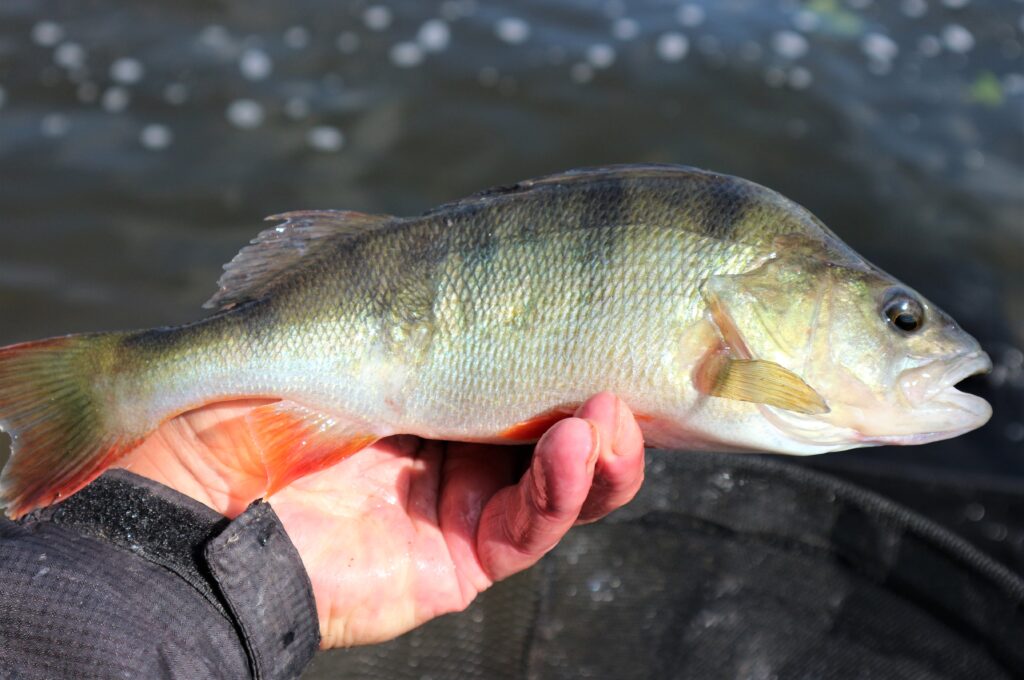

I couldn’t avoid the bleak and fingerling dace with red maggots on the hook. A darker worm segment did get down okay and the perch were on it fast, along with odd roach and hybrids. A single dark caster attracted plenty of bites on the deck too, while lighter ones got blitzed on the way down. I tried cutting back on the groundbait and just loose feeding hemp every put in, thinking that this might be the way to go, trying tares on the hook in the hope of finding better quality fish. Bites were tricky to hit and when I did connect with them it was only small roach that resulted. I needed to make decisions that would dictate how the rest of the session went. I ruled out maggots due to the small stuff, while more chop didn’t work as I think I’d caught most of the perch in front of me. I decided to concentrate on hemp and casters, stopping the groundbait altogether and simply loose feeding small quantities every put in with a catapult.
SHELL TIME
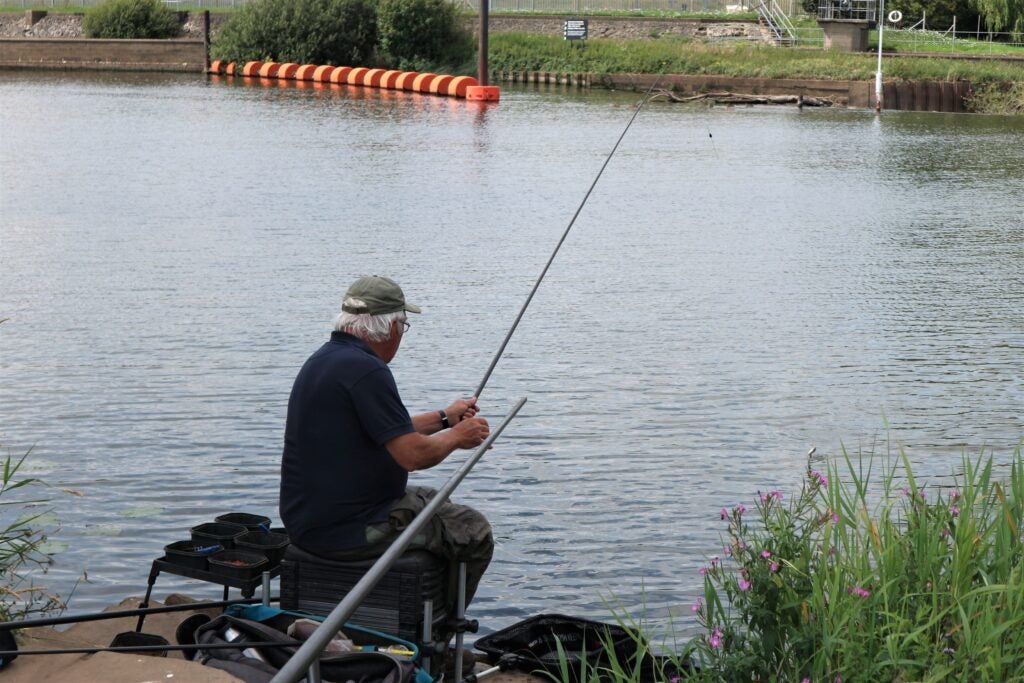

Dark casters on the hook kept the bites coming, finding a mixture of dace and big bleak, combined with some better roach and odd skimmers. There were far fewer problems with small fish on the way down. I enjoyed plenty of action on the pole, better I thought than sitting staring at a motionless quivertip, which can often happen on sluggish rivers. I suspect running line float tackle would have been hammered by small fish, while the pole offers superior presentation when rivers are carrying less water. You can work at things to achieve a faster catching rate, which was exactly what I’d done. Other anglers nearby were struggling on feeder gear, hardly getting a bite by this stage. If my swim had been a bit deeper, I think a whip might have caught even quicker, but although I had set up a to-hand rig earlier, it wasn’t running through right with so little flow. Short lining with a positive olivette rig was definitely the best option.
WEIR FEATURE
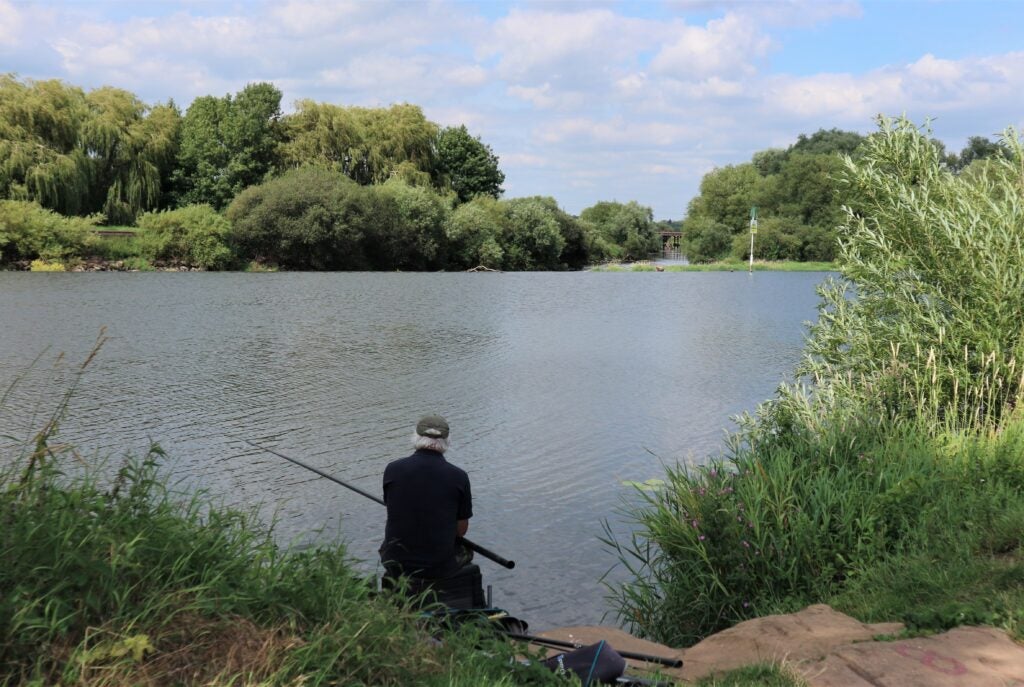

You can conveniently park your car by your peg on this part of the river, which is a big bonus. Most swims feature large boulders you can comfortably fish from, rather than having to organise your kit out in the water. I’m glad I didn’t have to do that, because there were a few inconsiderate speeding boaters on this occasion and I came close to a soaking several times, even perched high up on the bank. Normally the best way to fish this spot is with a heavy feeder, cast over towards the weir sill. But there needs to be more flow to find the big barbel and chub. A mate of mine caught a double figure whiskers just a few swims away last year, but one of my friends on this occasion was having a nightmare with feeder tackle, saying he had picked a proper snag pit. Locals say the Trent can eat feeders, but luckily for me it was mainly casters on this trip! Nothing particularly big, but I was still putting a fair weight together and keeping nicely busy.
HAPPY DAYS
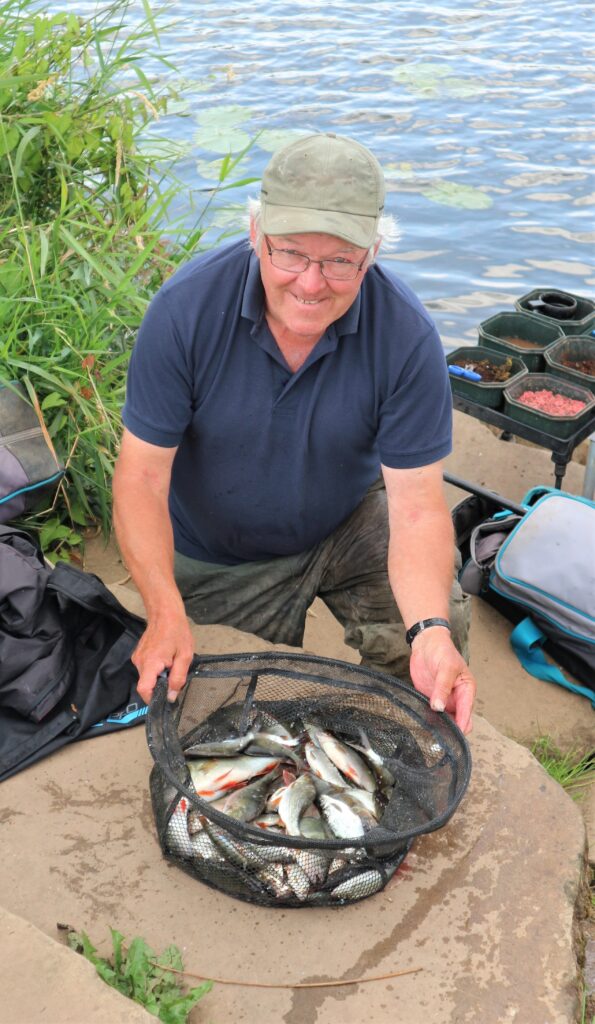

Some diehards won’t fish big rivers when they are low and clear like on this trip, but I relish giving them a go any time. It’s nice to bring different methods into play, such as the pole, which provided great sport. I think I might have done even better if I had chosen a peg with a bit more flow, not realising how painfully slow the water was in front of me when I first set up. At times, due to lock movements, my swim was actually backing up. I’m convinced the pole gave me an edge in these conditions, helping to control my end tackle very precisely, hitting a much higher percentage of bites than rod and line would have managed. Slow or fast water, nothing can beat a busy day on a big river for this angler. I had more exploring to do, enjoying a great day a bit further up at Fiskerton, catching chunky roach, dace and perch on a long whip, topped off with a cracking 6lb bream. It’s not all roses though. I’ve experienced a few pike-infested sessions.
STICK TIME
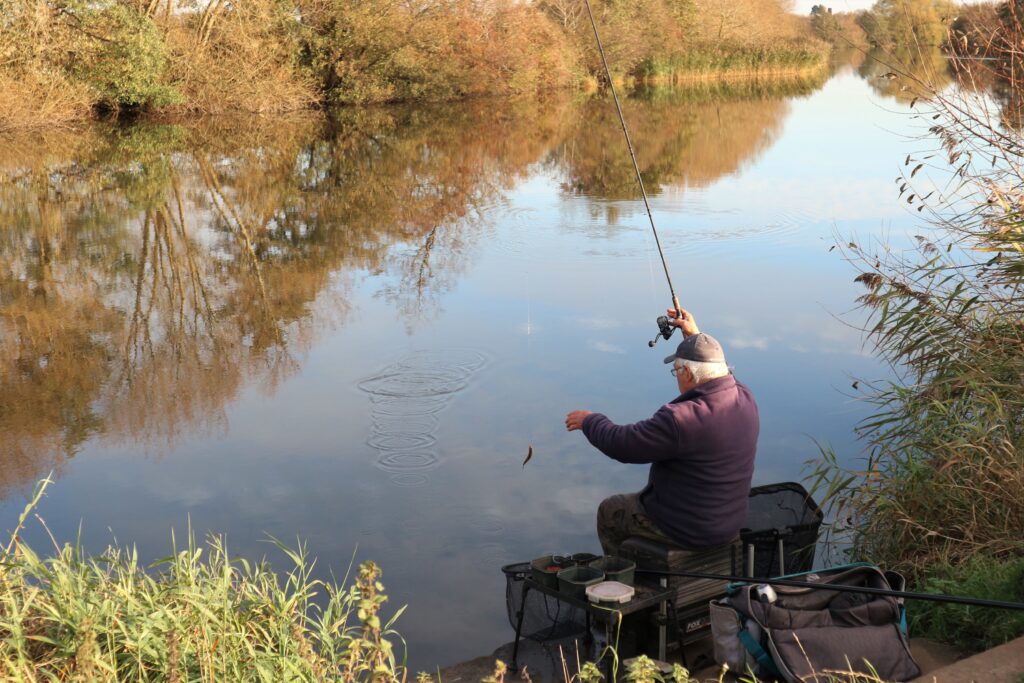

One of the most pleasing methods I’ve got back into using since living close to the Trent is the stick float. You hardly see any of these beauties in tackle shops anymore, but luckily I still have a good collection. I went back to Farndon during the winter, when the river did have some extra pace on it and found I could run a stick through perfectly. The water was cold and clear after some heavy overnight frosts, so it was never going to be easy. But gradually, with regular loose feed, my swim came to life and I started catching roach. Nothing massive but lots of them. I was hoping for chub, but I suspect you need to know the river better than I do to find this species. They don’t seem to be as widespread as they used to be. It took a while to get used to casting a stick float again. I began with bulked shot, making the basic mistake of forgetting how spread shot, in combination with a heavy cane base, cast so much better with an underarm sweep.
TIDE WATCHING
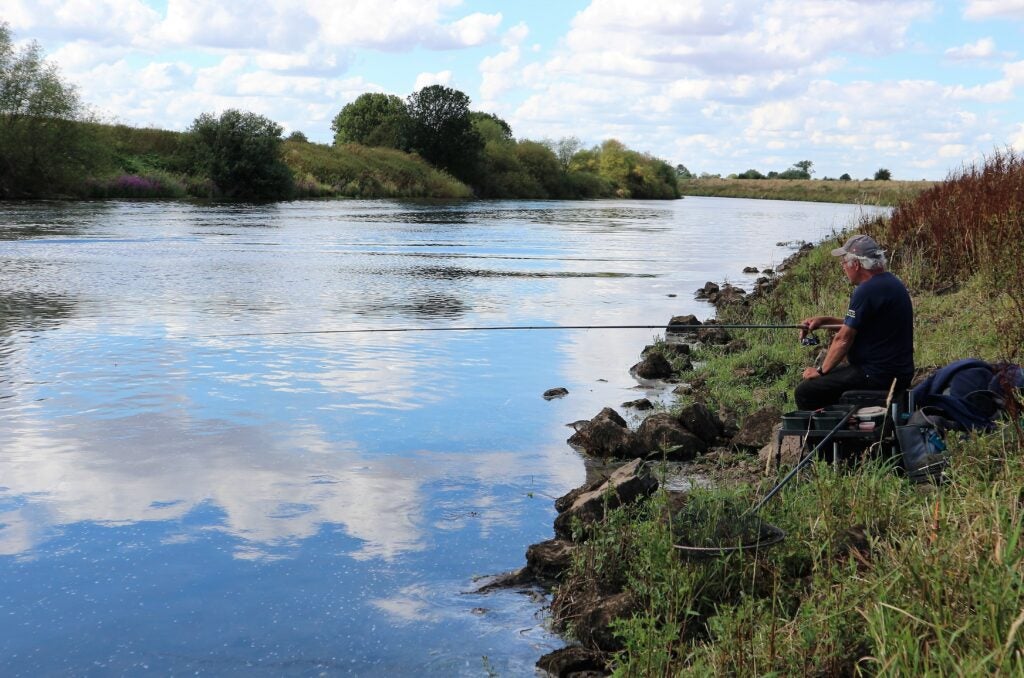

I wasn’t sure what to expect on my first trip to the tidal Trent at Collingham. My memories of tidal fishing go way back to the River Thames at Richmond and Teddington, where levels fluctuated enormously. I was certainly expecting something more dynamic than the minute three inch fall I experienced, which didn’t even require moving or adjusting my seat box. The river still had a fair pace on and it was great running a medium stick float through all day long. I simply loose fed hemp and casters every cast, switching between red maggots, caster and tares on the hook. I caught loads of perch, some fair-sized roach and plenty of dace. There are miles of pegs to explore on the river here, although you have to book the famous Cromwell Weir section where all the huge barbel live, up to a year in advance! I wasn’t too worried about that, because the tidal reaches are heaving with fish, wherever you decide to park your car and set up your kit.
IN THE FLOW
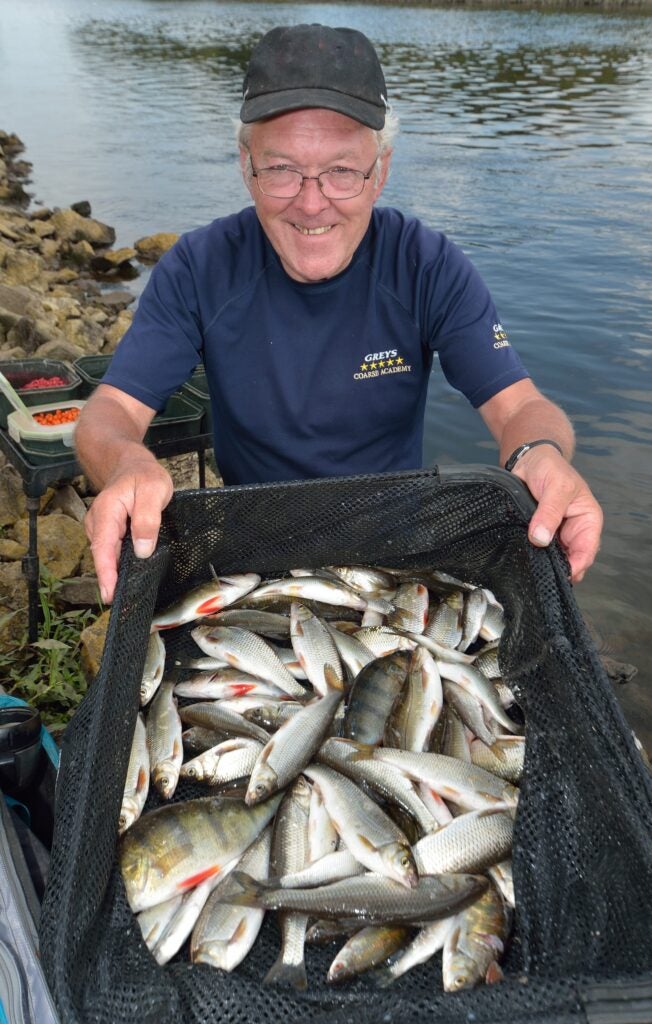

I know feeder fishing is all the craze at the moment, even on the Trent, but that can wait as far as I’m concerned. There had been a big gap in my life where the stick float was missing and I needed to make up for lost time. On yet another trip to the tidal stretches at Collingham, I caught this nice mixed bag of fish running a lignum stick through. The perch fell to red maggots, while the numerous dace preferred caster, again only loose feeding. I did try a straight leger towards the end of the session, to see if anything big was lurking at the tail end of the trot, but nothing more occured. It takes time to find out where the big fish hotspots are, and I’m not bothered if I find them by accident or design. It’s just great getting back on a major river again, where you can carefully build swims and catch fish all day, even in bright sunny conditions when stillwaters shut up shop. What I like most about big river fishing, is you can make things happen.










